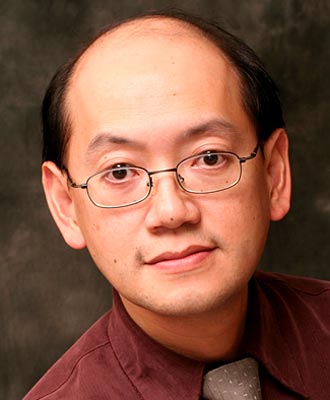To attend, please RSVP to epp@cseg.ca.
Unless we have exceeded the allowable number of people for the auditorium, we will not be replying to your email.
LunchBox Geophysics is free! Simply bring your own lunch (refreshments provided) and enjoy.
Abstract
A footprint is described as an undesirable pattern with a linear 'fabric' look that appears in a time or depth section of a 3D seismic volume. A footprint can be generated by acquisition inadequacy, uneven fold distribution, mute pattern, or processing artifacts such as those from migration. Such causes affect much of 3D data, land and marine.
Several effective footprint removal filtering techniques assume that the footprint orientations are parallel to the co-ordinate axes of the filter; but when they are not, as it often happens in data merges, those techniques may fail. A direct rotation of the data volume in order to line up the footprint orientation with the co-ordinate axes for filter operation, and rotating it back to the original orientation will involve two re-binning processes. Data rotation introduces errors due to imperfect interpolation methods in practice. Given this fact, in this talk, I will reduce those errors by only estimating the footprint in the rotated co-ordinates, and rotating it back to be removed from the original unrotated input data.
Biography
Mark Ng graduated with a B.Eng (Distinction) from Concordia University in 1981 and an M.Sc. from the University of Calgary in 1983, both in electrical engineering specialized in communication and signal processing. He worked in the R & D department at Sefel Geophysical from 1983 to 1985. After that time he was employed by Geo-X Systems Ltd. as a research Geophysicist in Calgary. In 1991, he was invited to teach in the University of Changsha, China for a year. After teaching, he returned to Geo-X where he worked until the processing department was taken over by Divestco Inc. in 2006. He has continued to work there since that time as a senior geophysical researcher. His research interests include seismic signal processing and migration techniques.
Honors:
Three times Mark's papers received SEG and CSEG honorable mention recognitions:
- Efficiency and accuracy enhancement for one-way wave equation migration through improved mapping function in the time-shift imaging condition received Honorable Mention at the 2009 CSPG CSEG CWLS GeoConvention in Canada.
- Using time-shift imaging condition for seismic migration interpolation, SPMI P1.1, ranked among top 30 papers presented at the 2007 SEG 77th Annual International Meeting.
- High resolution Radon transform in the t-x domain using 'intelligent' prioritization of the Gauss-Seidel estimation sequence, SP P3.4, ranked among the top 25 best papers presented at the 2004 SEG 74th Annual International Meeting;
Away from his technical research, he writes music and is a photographer.





